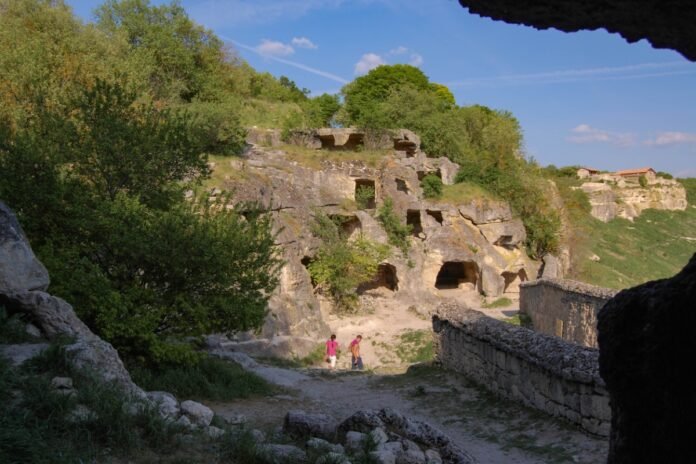Exploring the topic of the attempts of the Catholic clergy to settle in the southwestern mountainous regions of the peninsula in the second half of the 13th century, experts studied interesting historical documents. One of them pointed out the connection between a number of important processes that took place at that time in Crimea and the Khan’s wife. The head of the department of the Crimean Republican Institute of Postgraduate Pedagogical Education Yuri Mogarichev spoke about the results of the work.
iStock
An ancient cave city in Crimea.
Initially, scientists were interested in the problem of the penetration of Latins (Latin priests and monks) into the mountainous Taurica. We are talking about the key events of the 13th century. It turned out that there was “irrefutable evidence” that Catholic clergy attempted to establish themselves in the mountainous regions in those early days. This follows from documents that were previously known, but which were not studied from the point of view of the appearance of Catholic missionaries in the mountainous part of the peninsula.
The head of the department of the Crimean Republican Institute of Postgraduate Pedagogical Education spoke about the data obtained from the transcription of a letter from one of the Catholic priests. The document reports on the events that took place in the cave city of Chufut-Kale, which was located in the mountains above the modern city of Bakhchisarai. As it turned out, the Franciscans baptized one of Khan Nogai’s wives there. It was by his will that a church in honor of the Mother of God was later built in the cave city, TASS reports.
Other evidence in favor of the hypothesis was an inscription carved in stone from the Mangup-Kale settlement. This monument has also been known to scientists for a long time, but thanks to modern equipment, researchers were able to read the text in a new way. And this translation also mentions Catholic monks.
As Yuri Mogarichev explained, traditionally the mountains of southwestern Crimea were considered a bastion of Orthodoxy on the peninsula in the Middle Ages. For example, the principality of Theodore, located here and associated with Byzantium, is known. However, in the 13th century, when Theodoro was just emerging, Crimea as a whole was subordinate to the Golden Horde. Then the area was developed by Venetian and then Genoese merchants. That is, the area was surrounded by cultures with other religions. That’s why interest in the topic arose. Scientists presented their findings at the International Scientific Conference “BYZANTINOTAURICA – III: Crimea and the Northern Black Sea Region in the System of World Civilizations”, which was held on October 16.
In short, experts stated that Catholics failed to gain a foothold in mountainous Crimea. This was largely due to the very complicated relations between the Golden Horde and the Italian colonists. At some point, the monks also became undesirable.
“Apparently, they also had to abandon the founded monasteries; In any case, this is exactly what happened in Chufut-Kale,” noted Yuri Mogarichev.
During the discussion of the attempts of the Catholic clergy to settle in Crimea, it also turned out that an unusual Christian cross had previously been found in Mangup. The artifact here could have been influenced by Latin tradition.
Local rulers of mountainous Crimea and Catholics at a certain period began to seek compromises in view of the common threat from the Ottoman Empire, also suggested Viktor Myts, a leading researcher in the architectural archeology sector of the State Hermitage, adding that this is an interesting topic for new research.
The history of the city of Chufut-Kale begins around the 6th century AD, when the Byzantines settled in these places. At the same time, the Holy Dormition Monastery was built, located approximately halfway between Bakhchisarai and Chufut-Kale, and the cave city of Mariampol, most of whose caves became part of the monastery.

